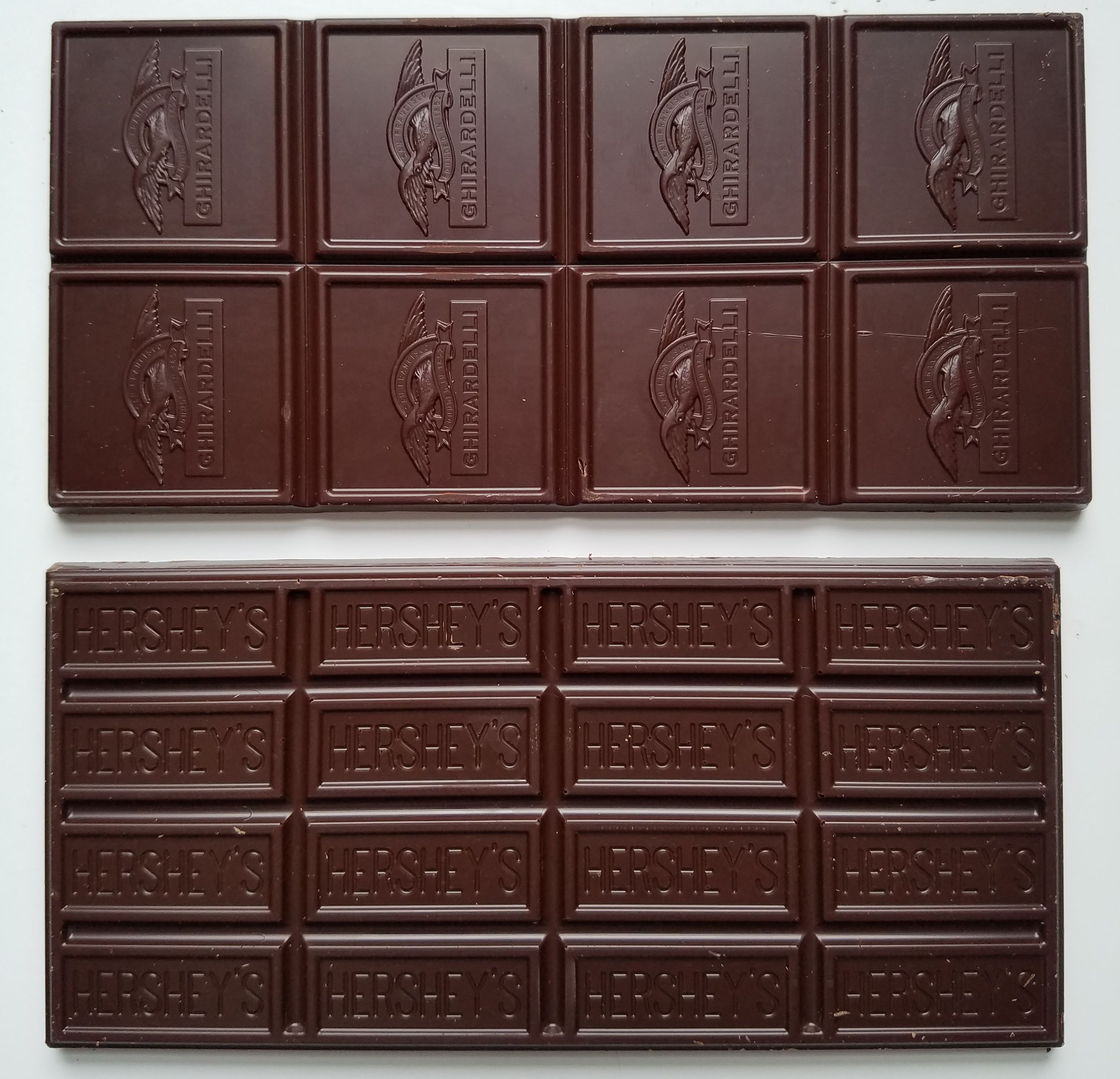 I’m one of those people that keeps the extra napkins they give you at the drive through. They always give you such a huge stack and it gives me some sort of sick sense of victory when I see my giant stack of FREE napkins in my glove box and even more so when I randomly need a napkin in the car and am able to take advantage of my glorious backup supply. It’s the little things, ya know? 😛
I’m one of those people that keeps the extra napkins they give you at the drive through. They always give you such a huge stack and it gives me some sort of sick sense of victory when I see my giant stack of FREE napkins in my glove box and even more so when I randomly need a napkin in the car and am able to take advantage of my glorious backup supply. It’s the little things, ya know? 😛
Since free napkins are so thrilling to me, you can only imagine how exciting it is when I find a hidden deal at the grocery store. I try to pay attention to the price per ounce part of price tags as much as possible. They don’t make it easy on you though. It’s getting to the point where you basically need a microscope to see the important parts. They put the price in nice, big, bold numbers but then the price per ounce is in teenie, tiny font below that. At Meijer, it’s just to the left of the price but again, in super tiny font.
Paying attention to price per ounce is important if you want to get the best deal because sometimes, the size that’s on sale is not actually the least expensive size. In other instances, you assume the bigger the package, the more money you’re saving. That’s the whole point of big box stores like Sam’s and Cost Co. right? You’re buying more of it so they can give you a lower price per unit. That’s actually not always the case. Comparing the teenie, tiny price per ounce or price per unit is the best way to know which version of something is ACTUALLY the least expensive.
I notice this with sale items all the time. The cleaning aisle is particularly interesting when you start comparing regular priced items by size. Bigger is not always cheaper in that aisle. Most recently though, I discovered a similar inconsistency involving chocolate bars.
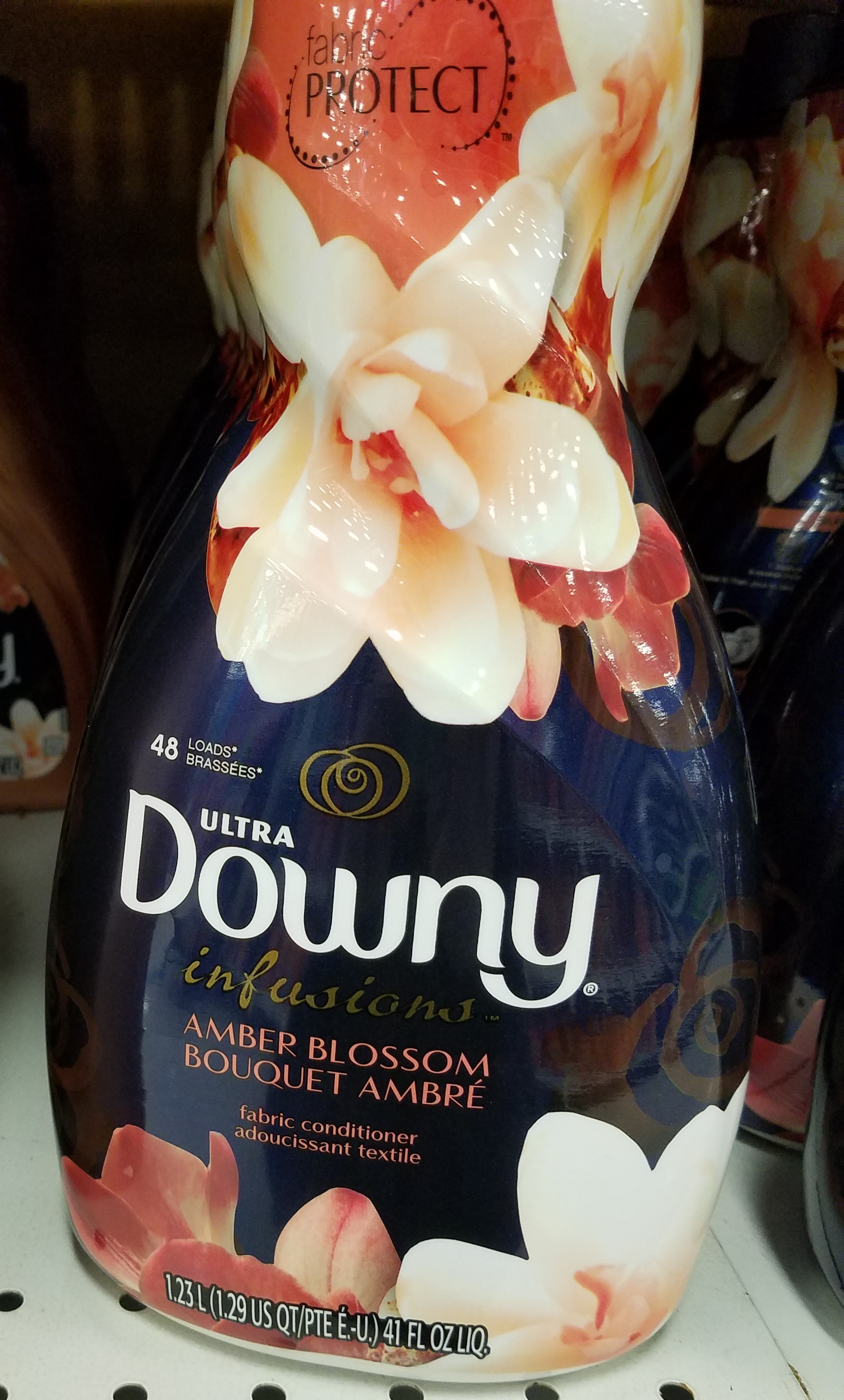 At 11 cents per ounce, the smallest size of Downy is not the most expensive. |
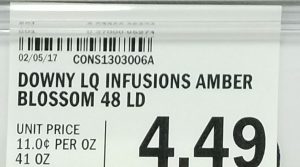 |
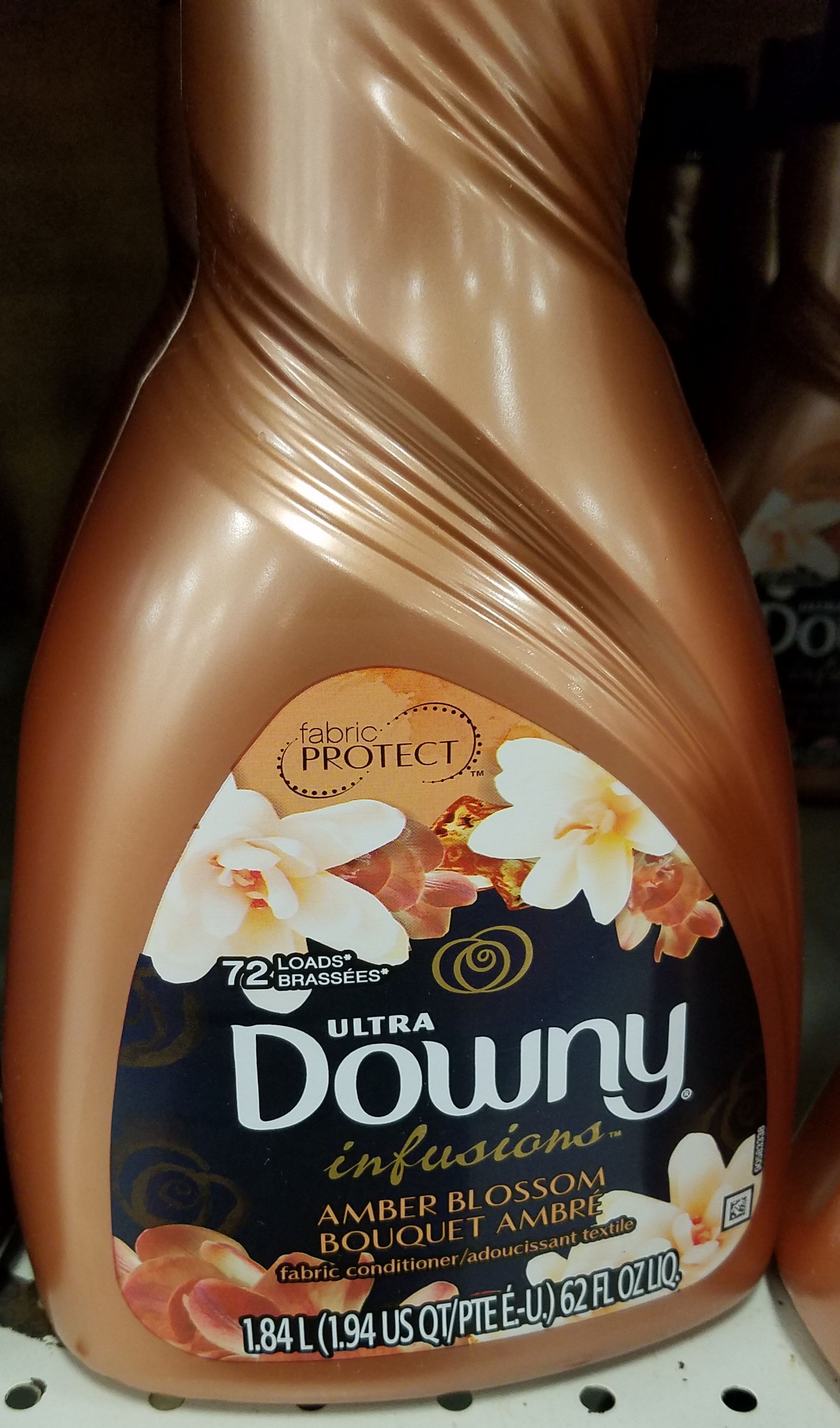 At 11.3 cents per ounce, the middle size of Downy is actually the most expensive of the 3 sizes available. |
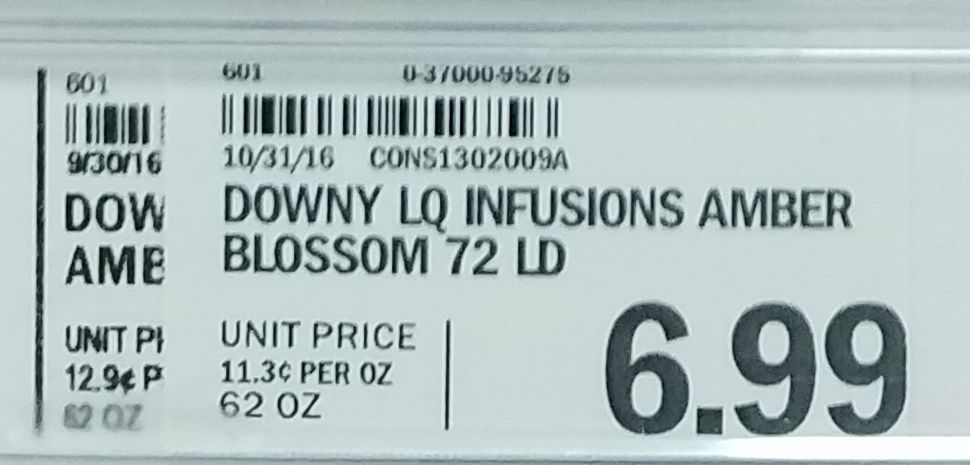 |
We keep a few bars of chocolate on hand pretty much all the time. A lot of the recipes I bake use chocolate, and sometimes you just have a chocolate emergency and need to gnaw on a square or two. Hershey’s is ok for certain recipes but generally speaking, we get Ghirardelli. Ghirardelli is readily available at Meijer just like Hershey’s is, and it’s available in a wider variety of flavors and in more levels of darkness than Hershey’s is. It is definitely more expensive but tasting them side by side, we’d pick Ghirardelli every time.
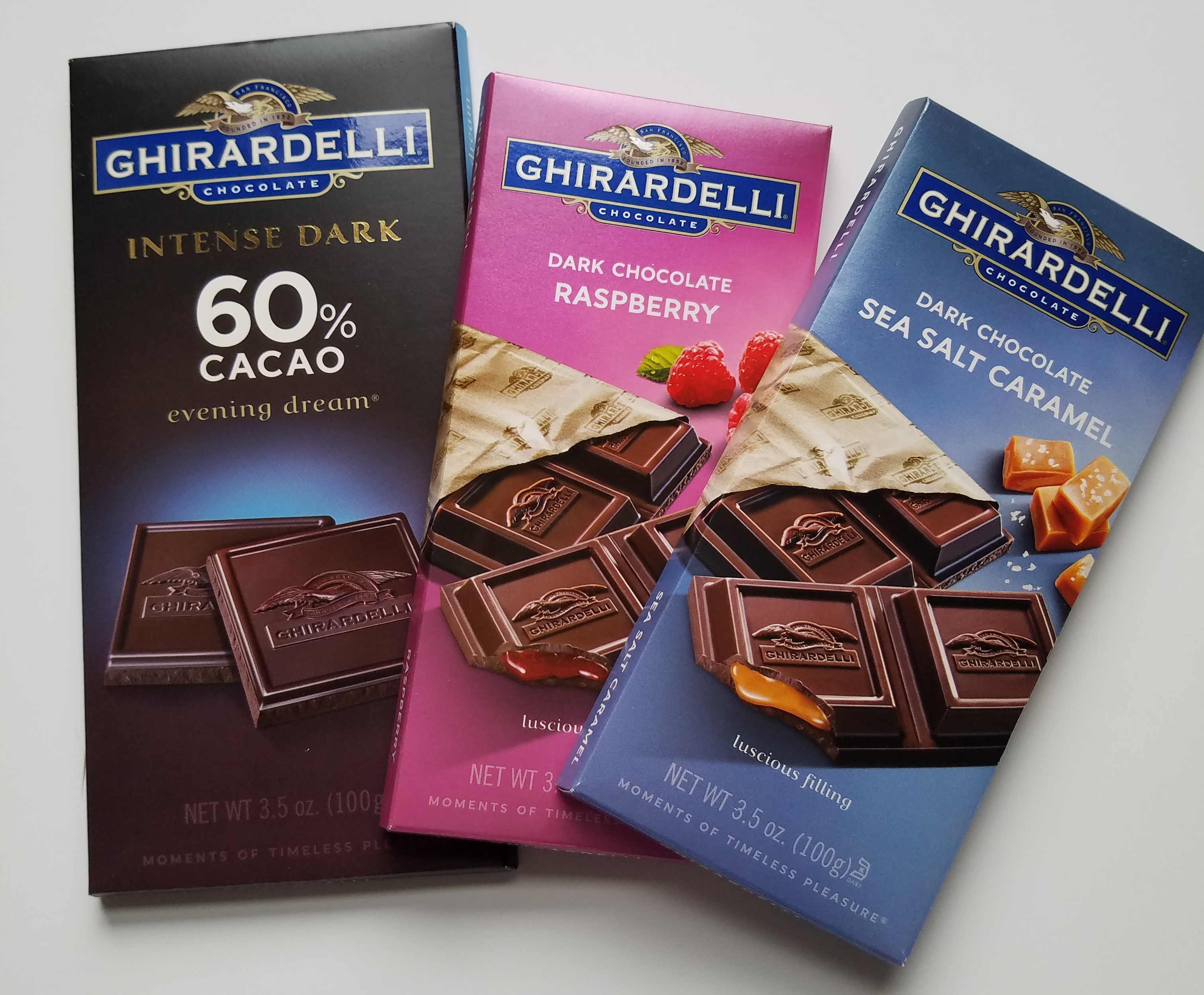
Ghirardelli is available in a variety of flavors and in 60%, 72% and 80% cacao.
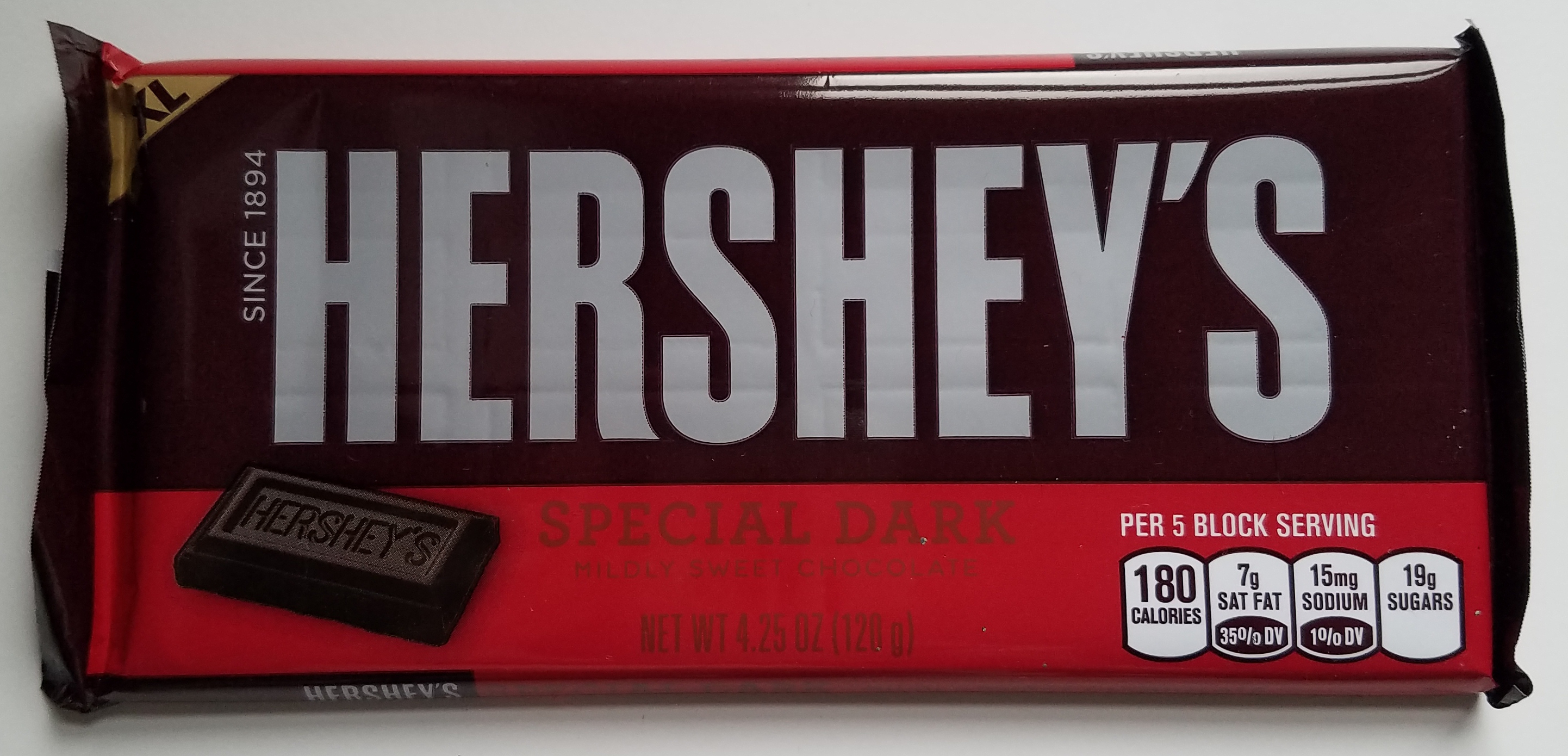
Hershey’s is only available in “Special” Dark which is 45% cacao
During my many chocolate purchasing endeavors, I first noticed that there were Ghirardelli bars both in the candy aisle, AND in the baking aisle. The packaging is slightly different and one is marked as a “premium baking bar” while the other just lists the flavor name but I didn’t think much of it at the time.
After buying chocolate over the course of a few months, sometimes from the baking aisle for a recipe and other times from the candy aisle if we were going to just eat it for dessert, it dawned on me, is there really a difference between the two? I’ve used different flavors of the higher end chocolate bars in the candy aisle for ganache and cake topping before. I’ve eaten leftover pieces of the chocolate from the baking aisle before. Both aisles sell varying degrees of darkness and clearly label the percentage. So what’s the difference between the two? As it turns out, there is no difference…except in the price.
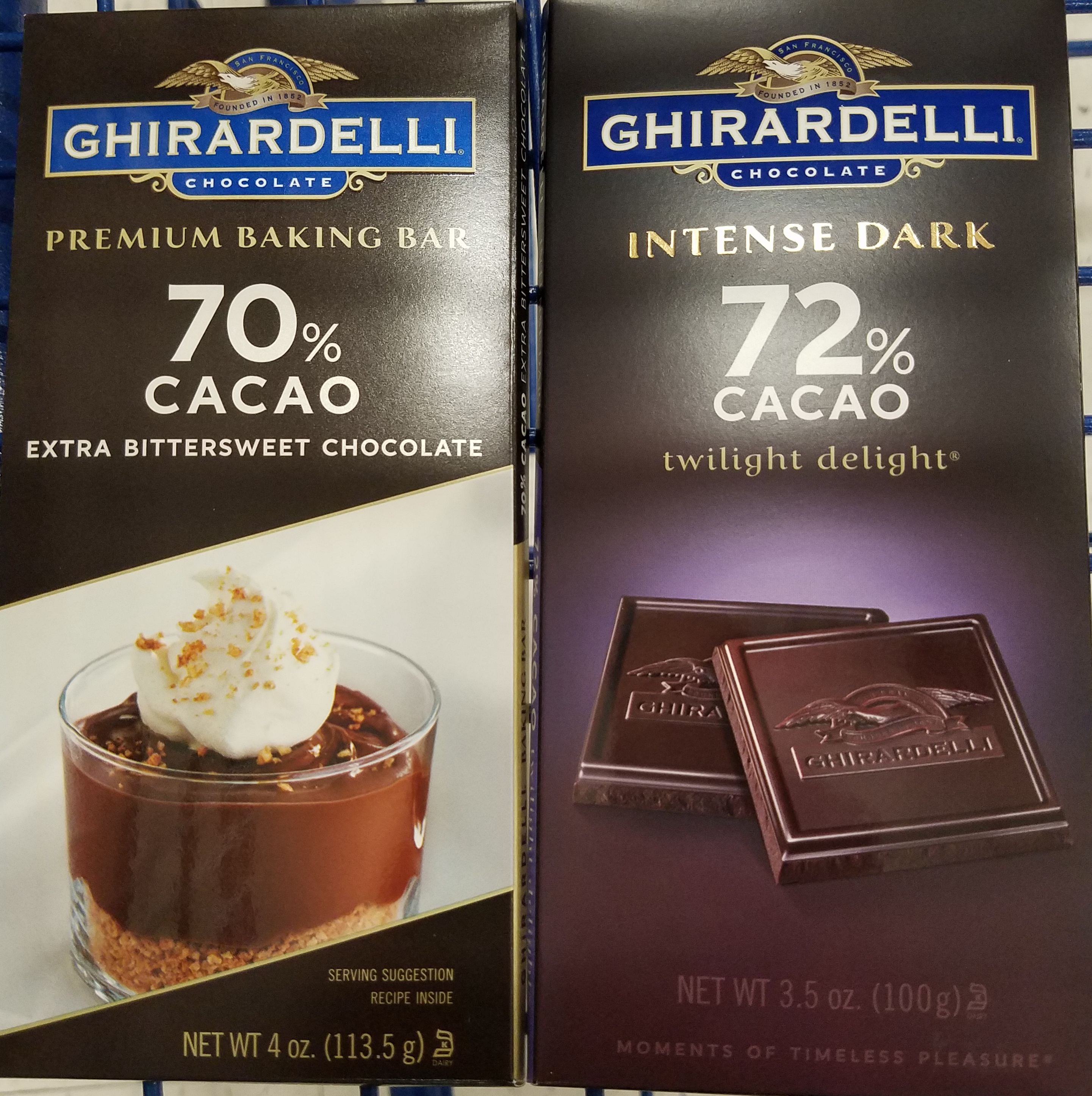
I started by comparing the two most similar items I could find. The baking aisle has a 70% dark chocolate bar and the candy aisle has a 72% dark chocolate bar. I would love to meet the person who could actually taste that 2% difference but as far as I’m concerned, they’re the same thing. They have the exact same list of ingredients, listed in the exact same order and I couldn’t tell a difference between the taste.
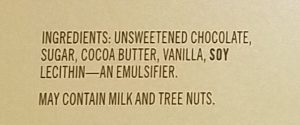
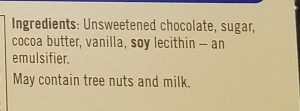
It’s a little bit sneaky because at first glance, it just looks like two similar chocolate bars that are both priced at $2.99…until you pay attention to the price per ounce. The baking aisle bar is actually a 4 ounce bar, while the candy aisle bar is a 3.5 oz bar. Ghirardelli bars are broken up into eight squares, similar to the tiny rectangles that Hershey’s breaks their bars up into. For the baking aisle bar, that means that each square is half an ounce. Now you may be thinking that half an ounce isn’t that big of a deal but buying the baking bar over the candy aisle bar means you’re getting an entire square FOR FREE. Whaaaaaaaattt!? And anyone who has ever had a chocolate craving emergency knows that sometimes, a square is everything.
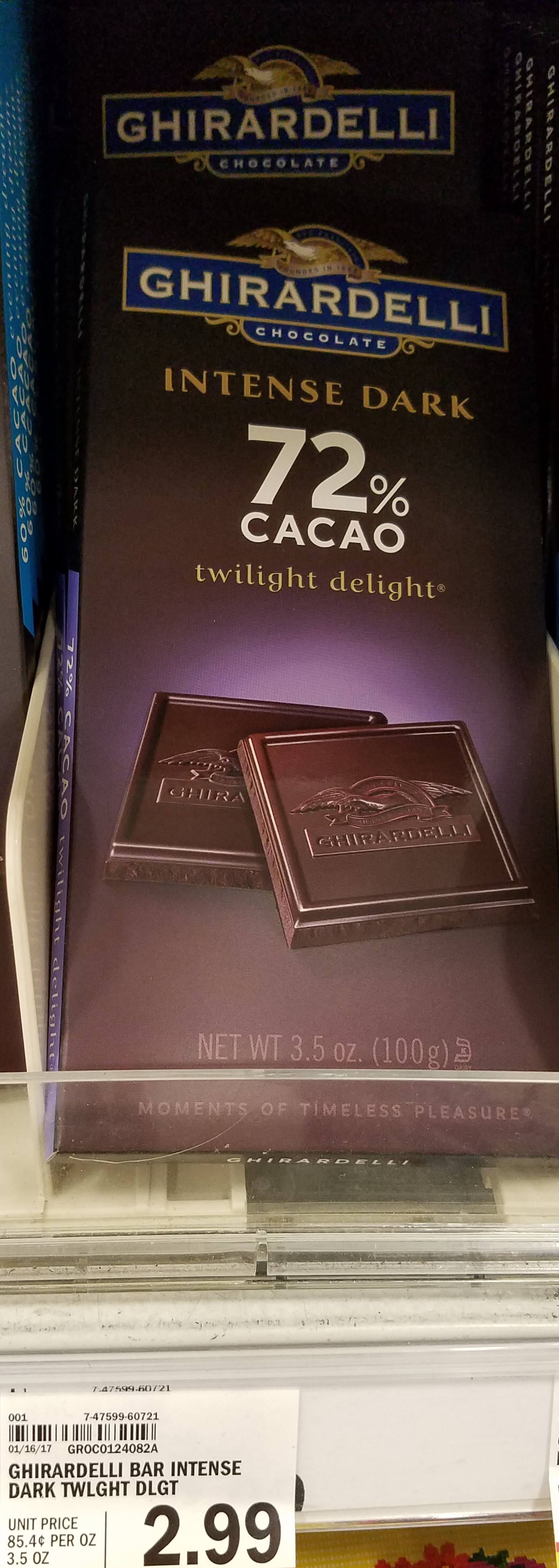
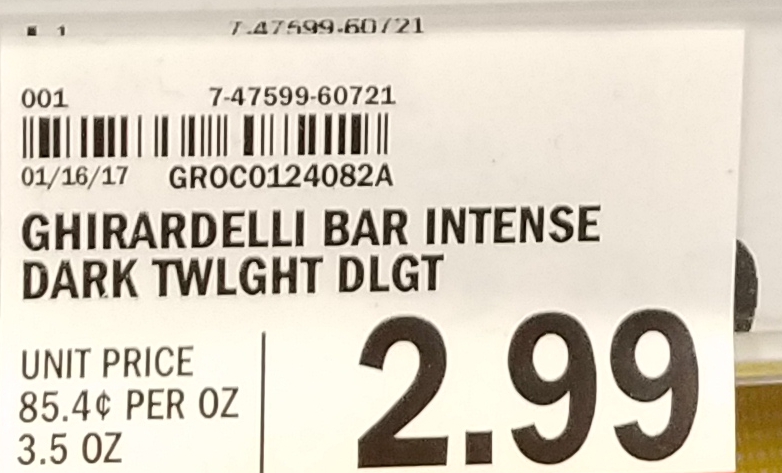
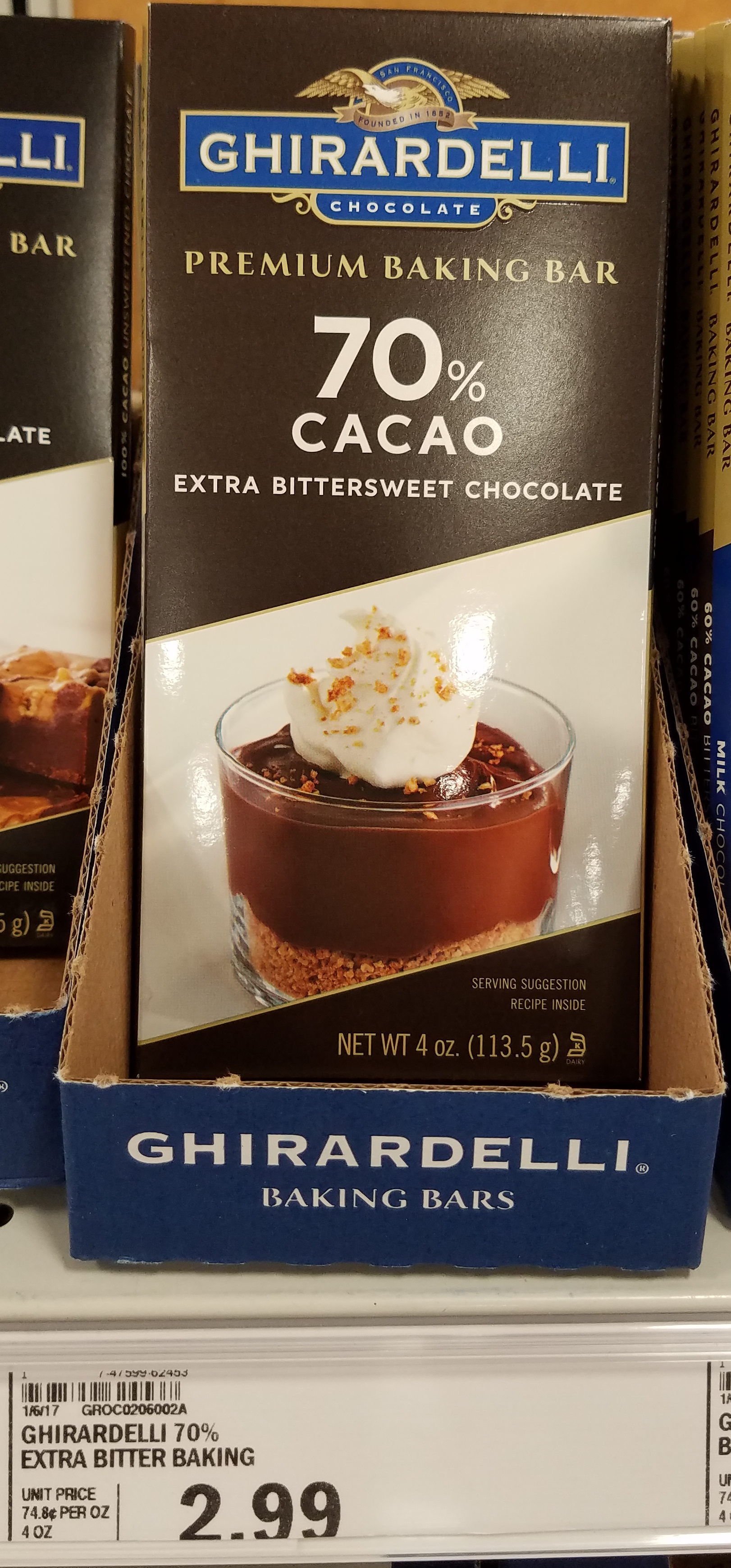
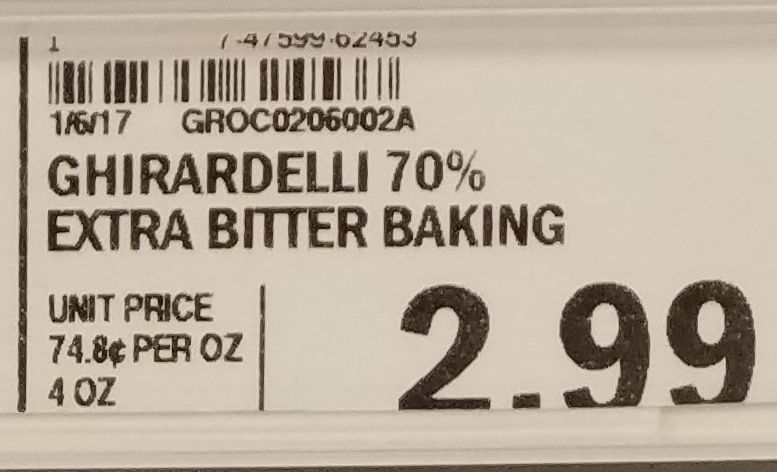
Looking at it another way, you’re paying 74.8 cents per ounce for the baking aisle bar and 85.4 cents per ounce for the candy aisle bar. If the candy aisle bar were the full four ounces, it would cost $3.42 as opposed to the baking aisle’s $2.99. That’s crazy! Sure, it’s only change, but why on earth would you pay more for the same thing if you don’t have to? Plus, you’re getting MORE with the baking aisle bar for the same price. I can’t even tell you how gratifying eating that last square of the baking aisle bar is knowing that it is basically free compared to what I could have paid. As if chocolate weren’t satisfying enough, this just knocks it up another notch. Best. Thing. Ever.
Keep in mind, the baking aisle also has 100% cacao unsweetened chocolate bars and you DO NOT want to eat those like candy. Anyone who has ever had a mom (or dad) who gave them a piece of baker’s chocolate to stop the incessant whining because you wanted to try some of the chocolate they were cooking with knows; 100% cacao is 100% bitter and super gross. Yes, I learned that lesson the hard way. (Thanks, mom 😉 ) It’s called baker’s chocolate for a reason. It’s for baking, not eating.
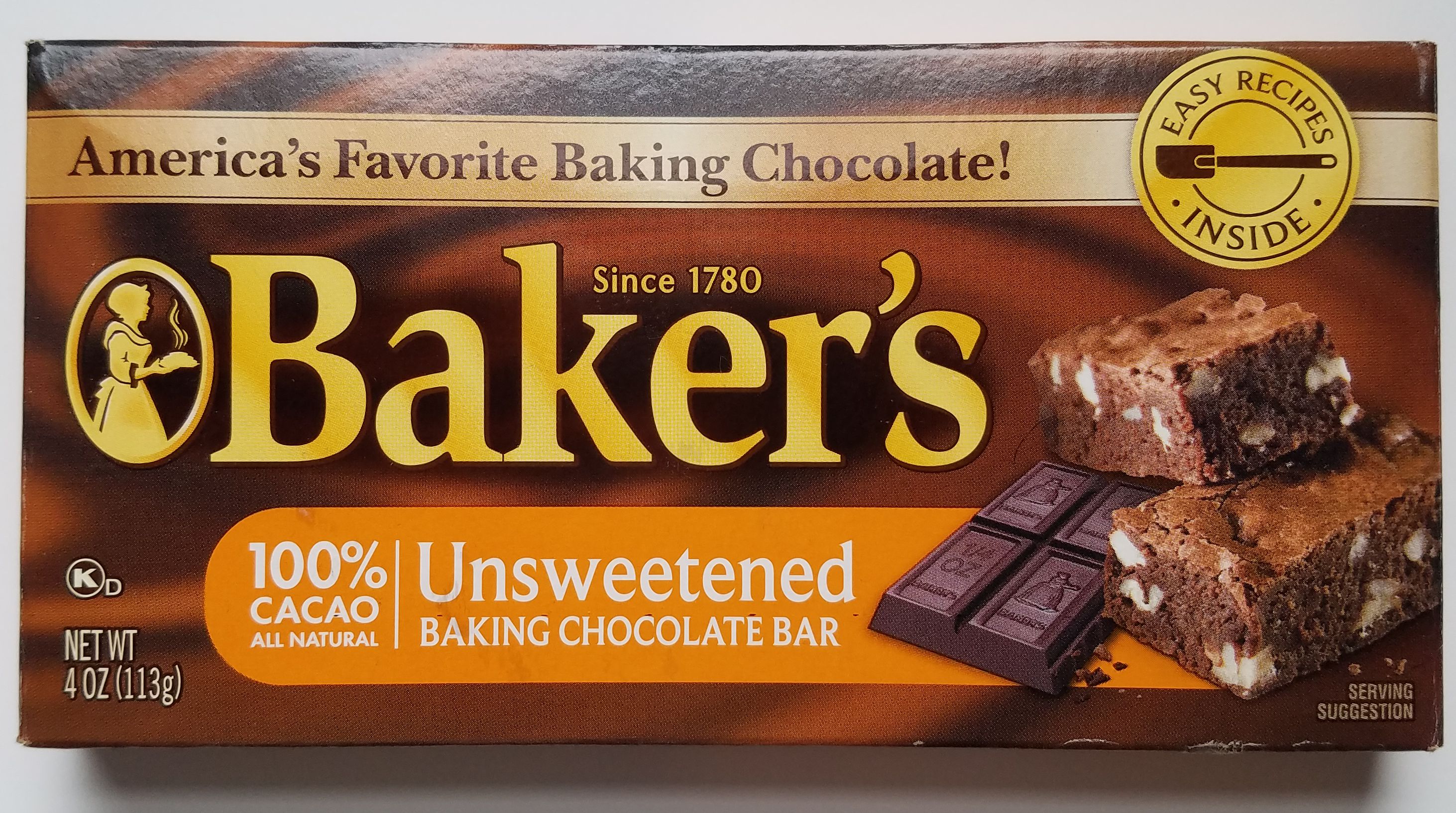
Fortunately, the baking aisle also sells chocolate with edible levels of darkness and more recently, they’ve even started selling bars of milk chocolate for those that haven’t come over to the dark side yet. So be fooled no more! Now you know a grocery store chocolate secret and it gives you another reason to visit the baking aisle. There is something for everyone in the baking aisle…and it’s at a better price.
What do you think? Am I overly excited about this or is this as big of a deal as I feel like it is? Dark chocolate, milk or white? What other grocery store loopholes have you discovered? Comment below!
